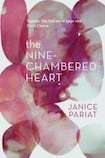
While attending a literary festival together in India earlier this year, my friend Bikram almost lost his reason when he spotted the writer Janice Pariat standing outside one of the venues. I was unfamiliar with Pariat’s work at the time but, impressed by his enthusiasm, I bought a copy of this, her second novel, and I’m glad I did for it’s a sublime character study that manages to be experimental in tone while never feeling contrived in style.
As the title suggests, the novel is separated into nine separate parts, each one narrated by a different person who addresses him or herself to a woman at various stages of her life, from childhood to adulthood.
We begin with an art teacher who struggles with the unnamed heroine’s inability to mix with others and travel through lovers, admirers, college friends and work colleagues, each of whom has diverse experiences of their time with her but has been deeply affected by her presence in their lives.
Second person
It's a fascinating construction, all the more so for the fact that the novel is written entirely in the second person, something that one doesn't find often in contemporary fiction. Jay McInerney successfully employed the conceit in Bright Lights, Big City, as did Mohsin Hamid more recently in The Reluctant Fundamentalist, but still, it's a rarity. Pariat's skill with the form is the equal of either of these books and, despite the fact that the tone changes every 20 pages or so, somehow it works perfectly, and the reader never feels lost or confused by who has taken control of the narrative.
Through each of the voices, the reader is given the freedom to build a picture of a woman who provokes sympathy and disdain at different times. She seems oblivious to the effect that she has on people and, as one of the narrators points out, she is not particularly beautiful so her ability to attract and seduce comes entirely from her spirit, her engagement with life and the manner in which she challenges those with whom she crosses paths.
Transient nature
We learn little of her family, other than the fact that her parents abandoned her at a young age to the care of her grandmother and their absence in the childhood sections is recalled time and again in her adulthood. There’s a suggestion that this has influenced her own transient nature, for just as the book is populated by nameless narrators, so it is also filled with unnamed cities to which she has moved.
Perhaps the most poignant section takes place at the very heart of the book when she, towards the end of her university life, is staying in a house where a boy not yet out of school falls in love with her. The boy is introverted and sexually inexperienced, a student of physics, and his world, which has previously been filled with order, is unsettled by an encounter with the half-naked girl as she emerges from a shower. He struggles to articulate his feelings for her and it’s unclear whether she enjoys the power she has over him or is simply unaware of it, but one feels, by the end of the chapter, that this may be the only romantic encounter of the boy’s life, despite the fact that it remains entirely chaste, and there’s a certain melancholy to that.
There are more urgent voices than his though, some who seek to control the girl, some who just want to have sex with her, some who feel angered by her treatment of them. Only once does a narrator return for a second round and, while this interferes slightly with the novel’s clear structure, it makes sense as who among us has not returned to a former relationship at some point in the hope of re-igniting a flame that might not be entirely extinguished?
Throughout, Pariat writes with great elegance, her sentences rich with introspection. There's a feeling of poetry to the language as she allows the 10 personalities to come through in the writing. Like Eimear McBride's A Girl is a Half-Formed Thing, the central conceit and the manner in which Pariat plays with language, is one that might not work in a second, or even a longer, novel, but here, in a short book that remains captivating throughout, it is entirely successful.
John Boyne's latest novel is The Heart's Invisible Furies (Doubleday)












